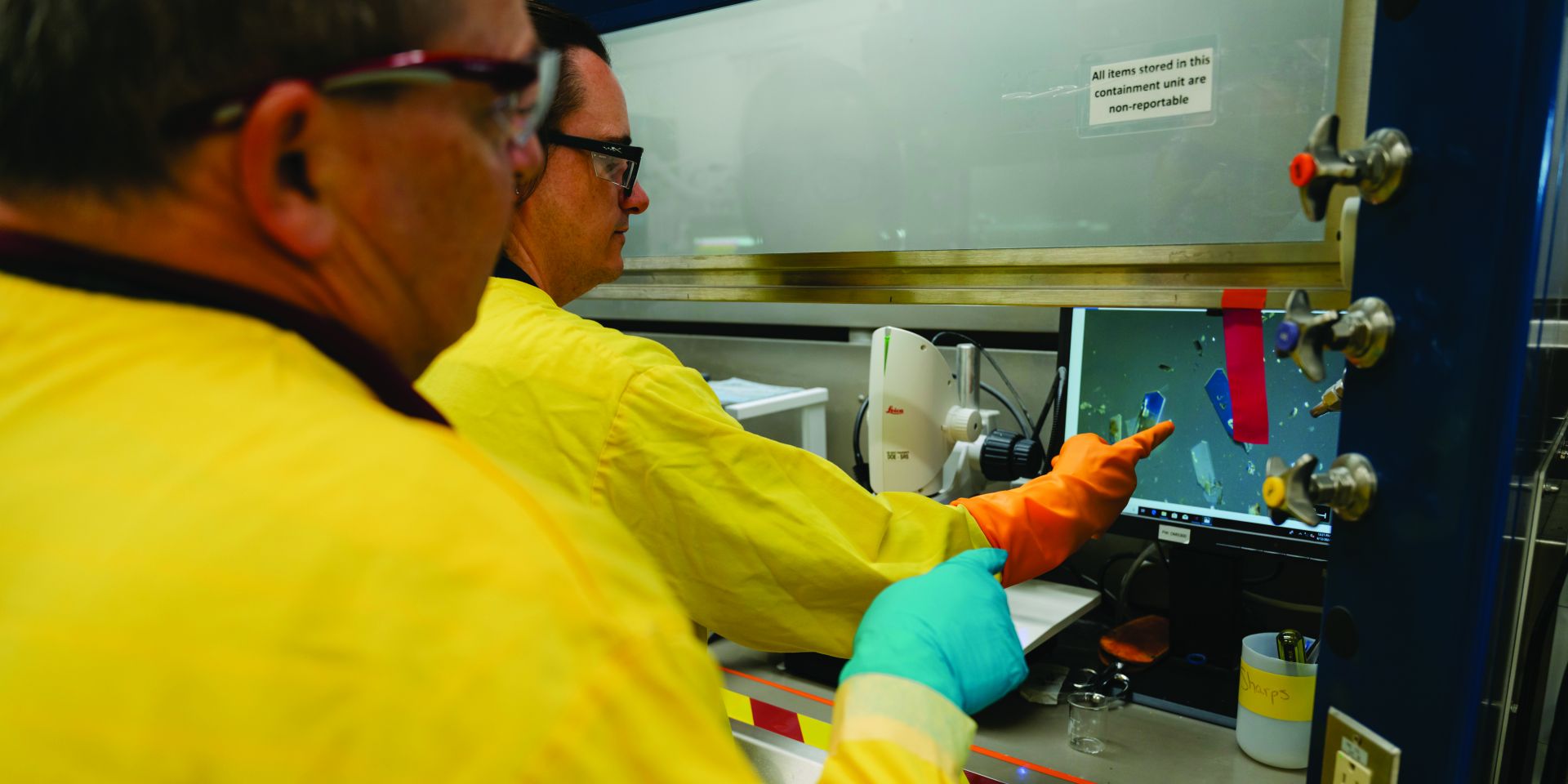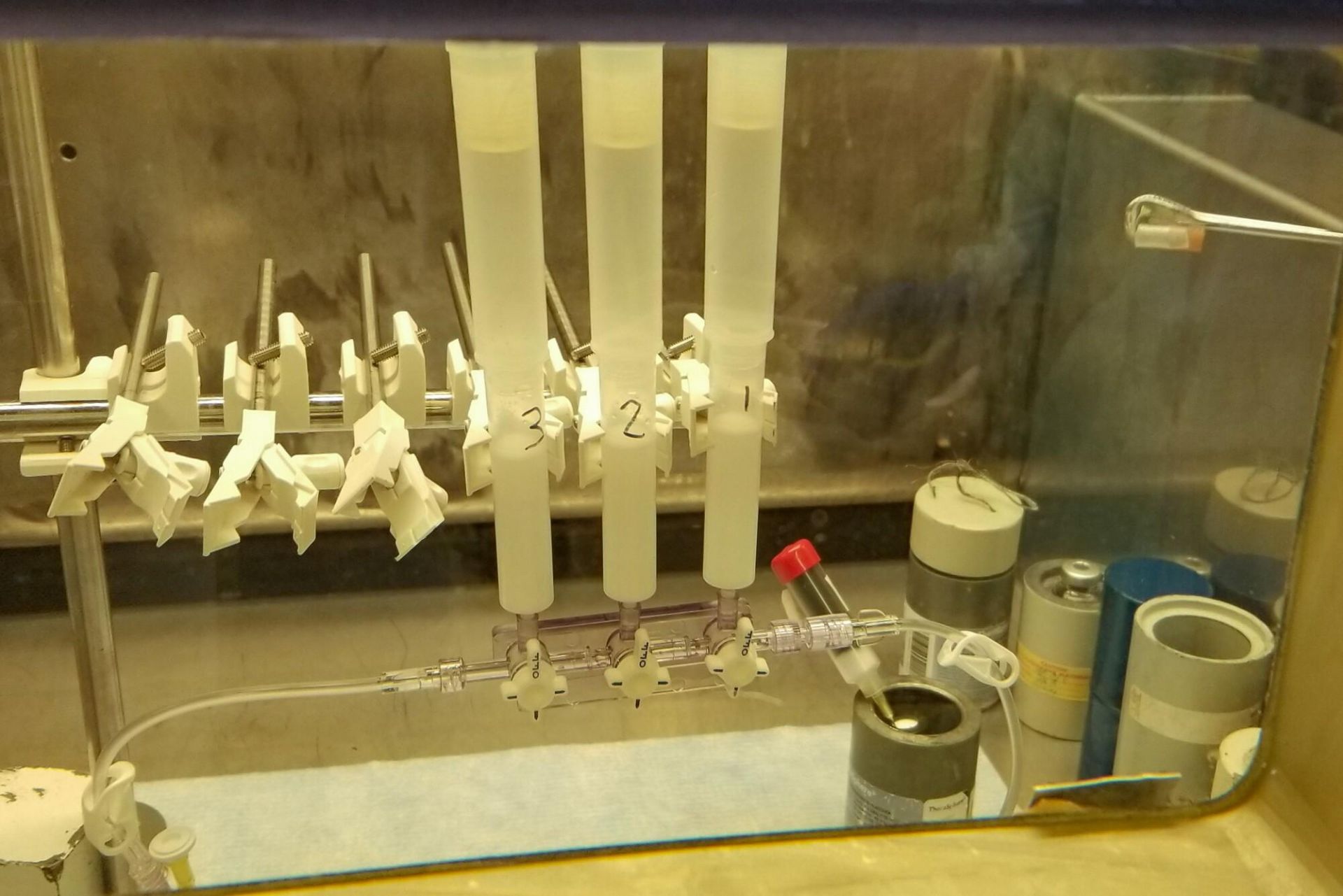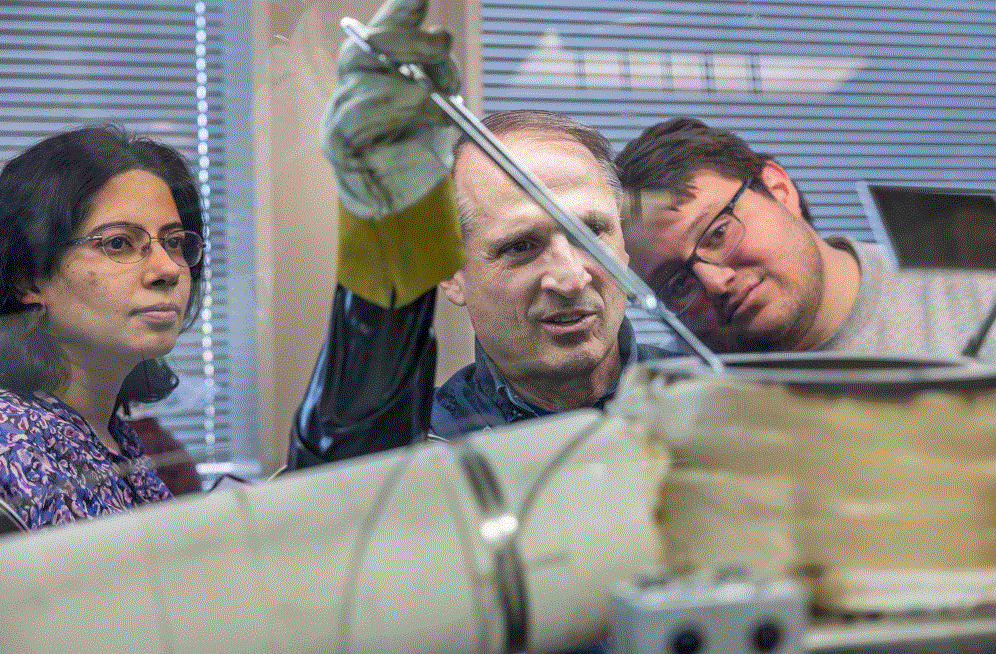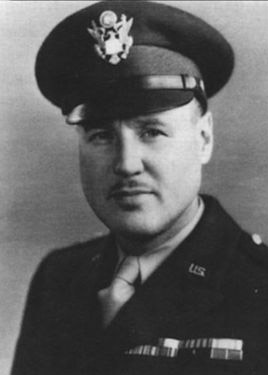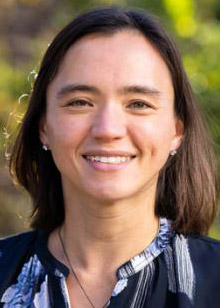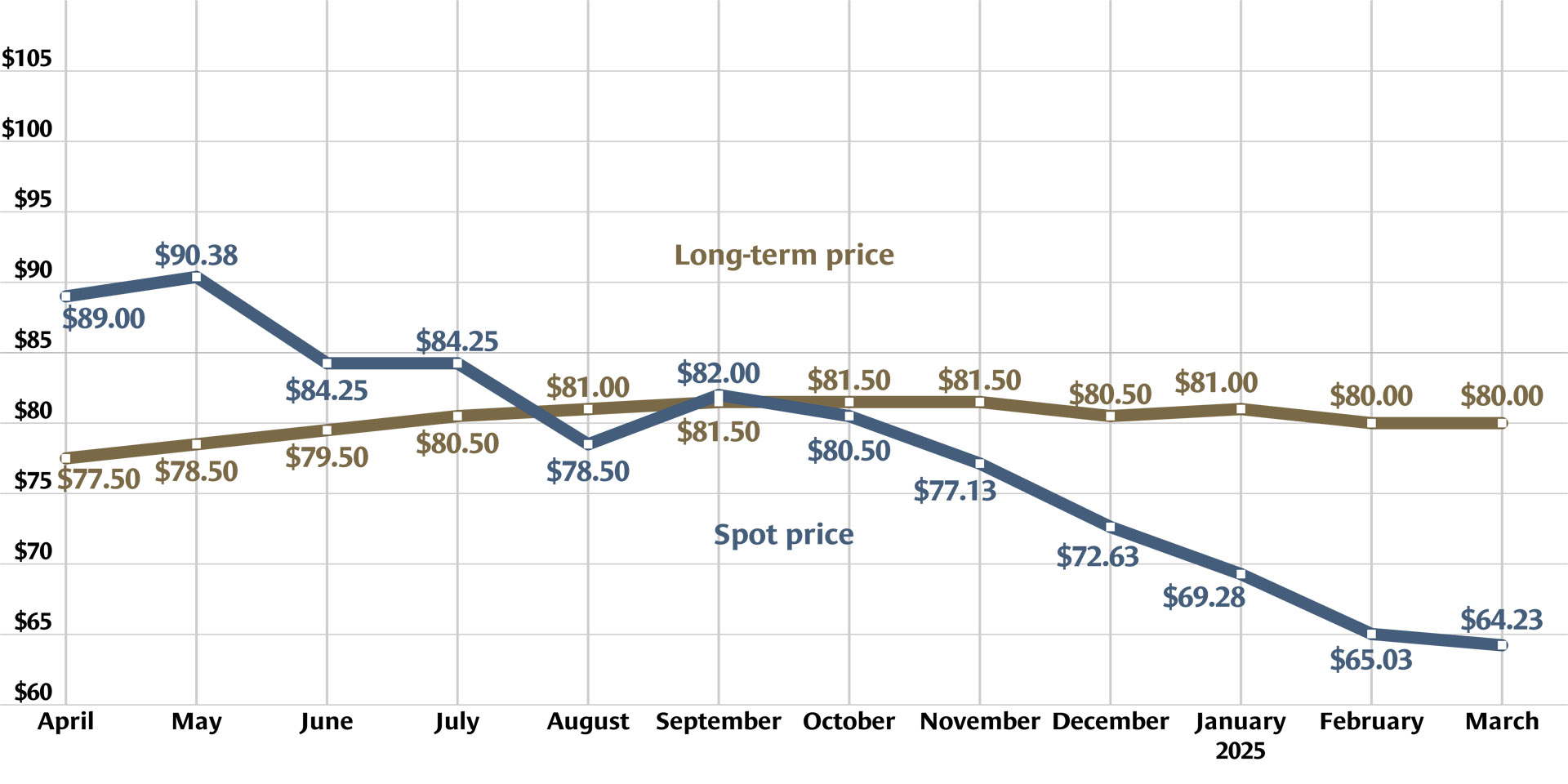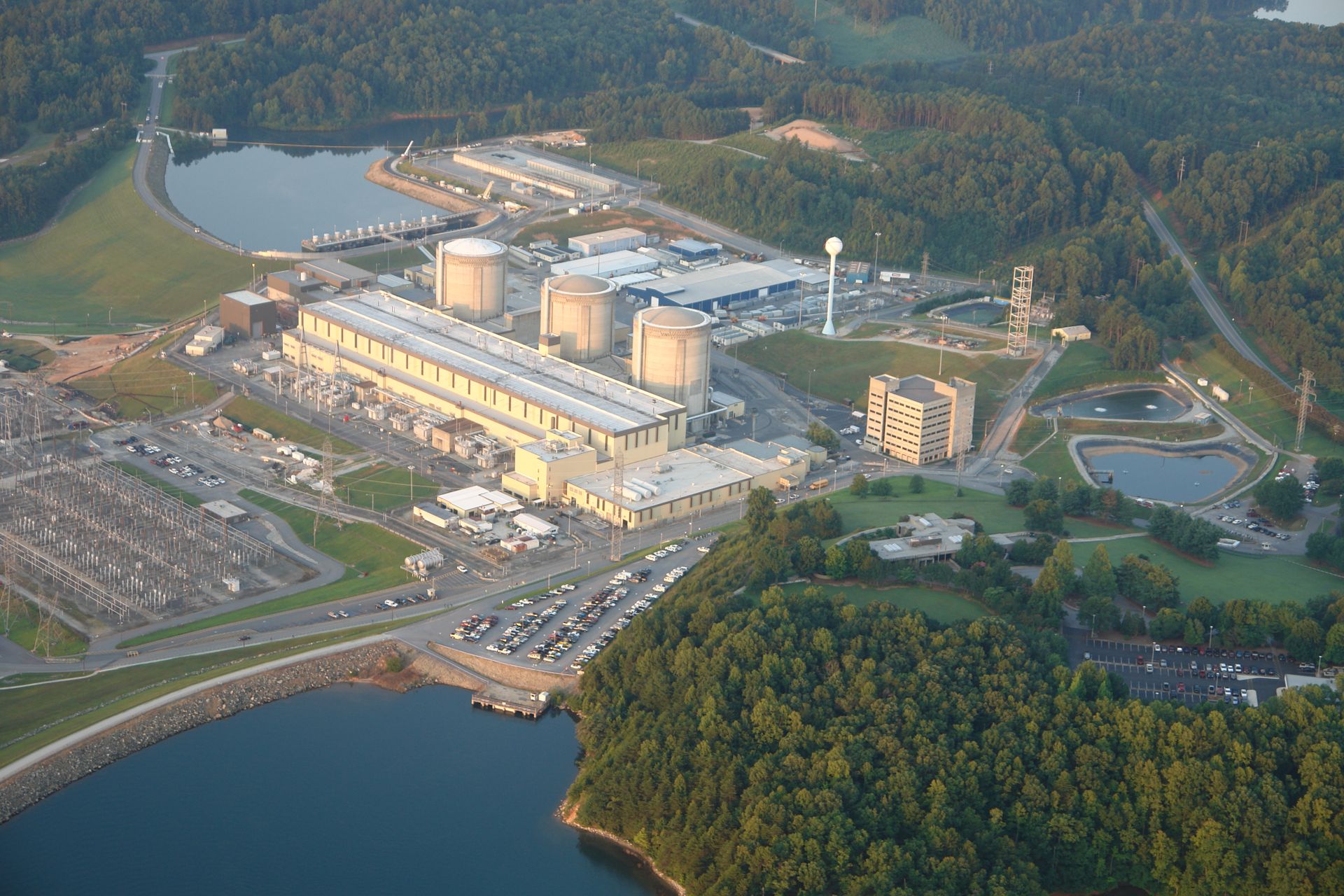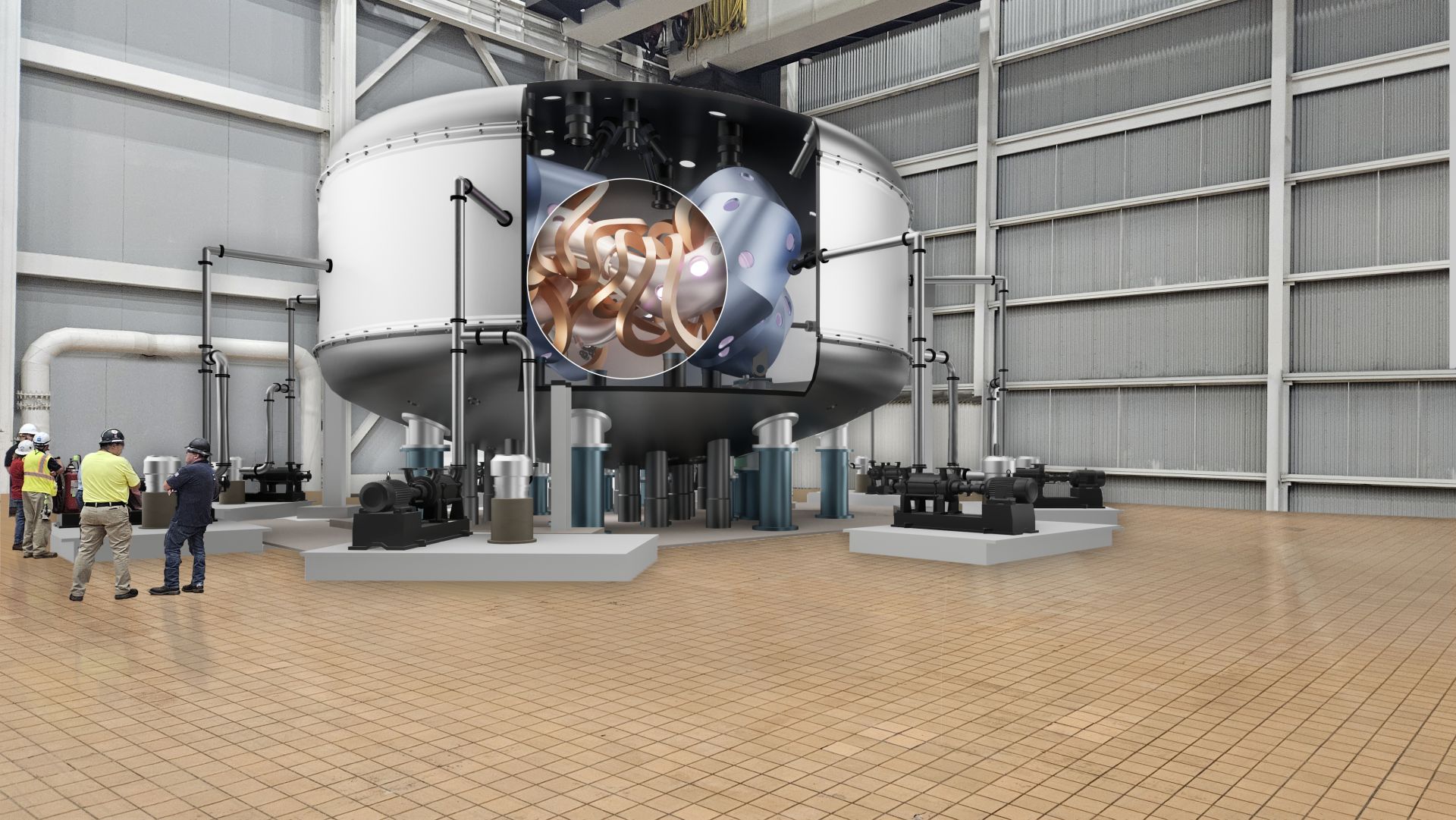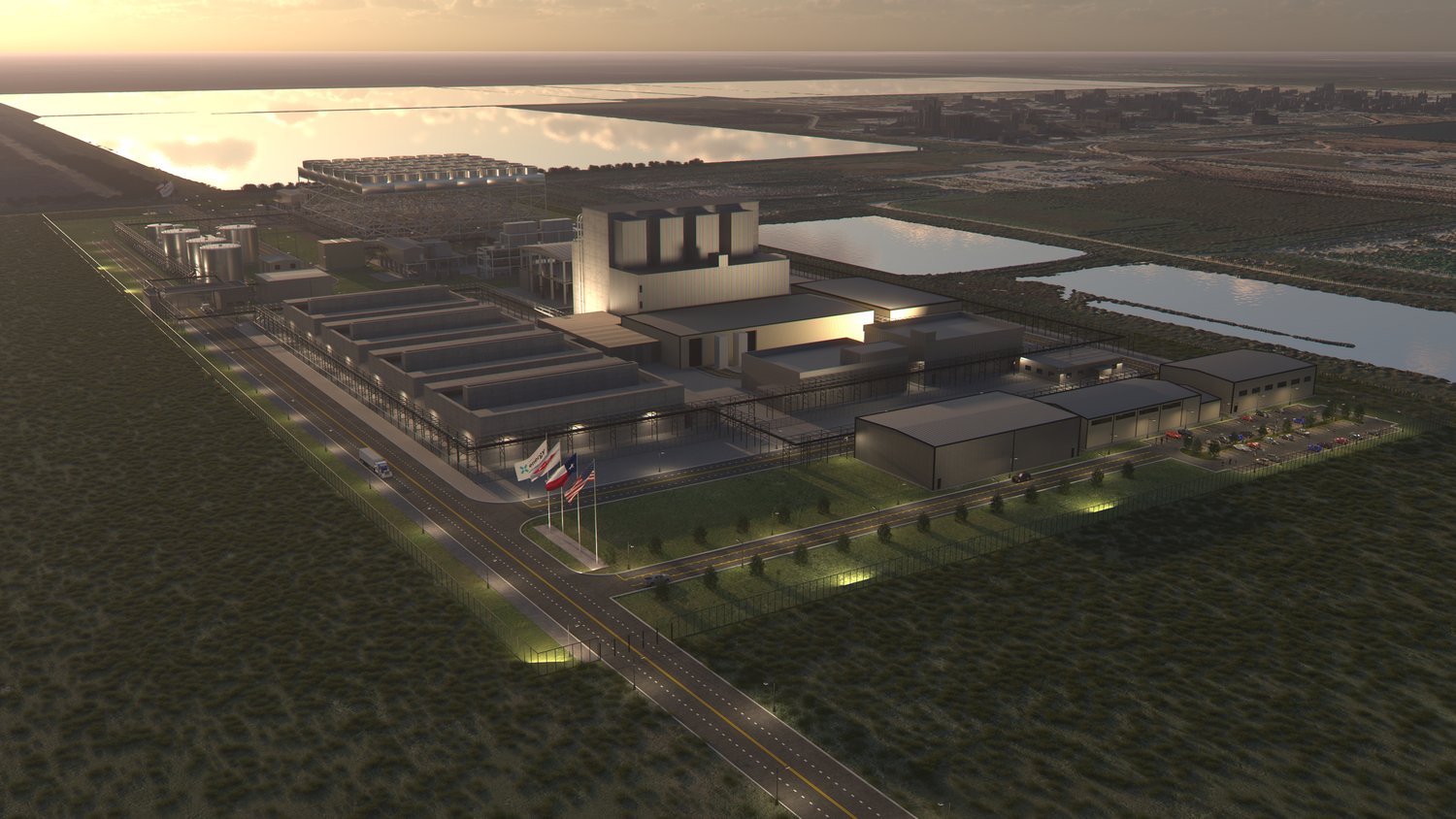SRNL senior scientist Travis Deason demonstrates for lab fellow David Diprete the search for appropriate crystals of novel actinide materials using a microscope located in a radiological containment unit. (Photo: SRNS/Lj Gay)
Savannah River National Laboratory researchers are building on the laboratory’s legacy of using cutting-edge science to effectively immobilize nuclear waste in innovative ways. As part of the Center for Hierarchical Waste Form Materials, SRNL is leveraging its depth of experience in radiological waste management to explore new frontiers in the industry.
William D. Magwood IV (left) meets with government officials during a visit to Mongolia. (Photo: NEA)
Nuclear Energy Agency Director General William D. Magwood IV visited Mongolia recently for a series of meetings with government representatives and to participate in discussions on nuclear energy development in the country.
At-211 undergoes purification and a series of quality checks. (Photo: Don Hamlin/University of Washington)
The Department of Energy’s National Isotope Development Center (NIDC) on March 31 announced the successful long-distance shipment in the United States of a biologically active compound labeled with the medical radioisotope astatine-211 (At-211). Because previous shipments have included only the “bare” isotope, the NIDC has described the development as “unleashing medical innovation.”
Principal investigator Ruchi Gakhar (left), technician Dean Burt (center), and intern Diego Macias, shown loading salt into the loop. (Photo: INL)
The Department of Energy announced March 31 that a new Molten Salt Flow Loop Test Bed at Idaho National Laboratory recently went through its inaugural test run. The closed-loop test system will allow for continuous monitoring and analysis of chloride-based molten salt reactor technology and instruments before the construction of the Southern Company/TerraPower Molten Chloride Reactor Experiment. MCRE—an experimental fast-spectrum molten salt research reactor—will be built at INL’s repurposed Zero Power Physics Reactor, which has been renamed LOTUS (Laboratory for Operation and Testing in the United States).
A Disa HPSA test unit used in a study in the Navajo Nation. (Photo: Disa Technologies)
The Nuclear Regulatory Commission has received a license application from Disa Technologies to use high-pressure slurry ablation (HPSA) technology for remediating abandoned uranium mine waste at inactive mining sites. Disa’s headquarters in are Casper, Wyo.
Duke Energy's Oconee nuclear power plant. (Photo: Duke Energy)
All three units at the Duke Energy’s Oconee nuclear power plant in South Carolina are now licensed to operate for an additional 20 years.
The reactor hall of the Halden research reactor in Norway. (Photo: IFE)
The government of Norway has granted the transfer of the Halden research reactor from the Institute for Energy Technology (IFE) to the state agency Norwegian Nuclear Decommissioning (NND). The 25-MWt Halden boiling water reactor operated from 1958 to 2018 and was used in the research of nuclear fuel, reactor internals, plant procedures and monitoring, and human factors.
Southern Nuclear and Westinghouse C-suite executives John Williams, Dan Lipman, and Margaret Cosentino spoke during the Congressional AP1000 Fly-In in Washington D.C. (Source: Westinghouse)
Dozens of Westinghouse employees and supply chain partners descended on Washington, D.C., last week to build legislative support for new nuclear projects.
Concept art showing Type One Energy’s Infinity One prototype stellarator inside TVA’s Bull Run fossil plant. (Photo/Image: Business Wire)
Fusion startup Type One Energy has announced the publication of a baseline physics design basis for its proposed Infinity Two stellarator fusion pilot power plant. The design basis was published in a series of seven papers in a special issue of the Journal of Plasma Physics. According to the company, the design basis realistically considers for the first time the relationship between competing requirements for plasma performance, power plant startup, construction logistics, reliability, and economics utilizing actual power plant operating experience.
Xe-100 Dow Seadrift concept art. (Image: X-energy)
Dow and X-energy announced today that they have submitted a construction permit application to the Nuclear Regulatory Commission for a proposed advanced nuclear project in Seadrift, Texas. The project could begin construction later this decade, but only if Dow confirms “the ability to deliver the project while achieving its financial return targets.”
